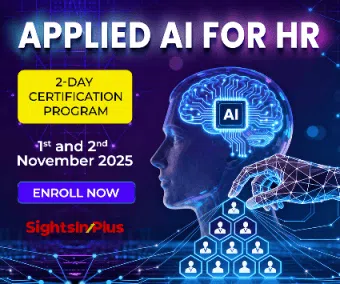In today’s rapidly changing business environment, a growing talent gap is a reality that many industries are forced to grapple with. To effectively bridge this gap, it is crucial for companies to recognize that it requires more than reactive hiring but demands a strategic, forward-looking approach.
The competency gap is the fundamental variation between the actual capabilities displayed by the workforce that is readily available and the specialised proficiencies and credentials that organisations require from potential talent.
This discrepancy leads to a lack of competent applicants with the necessary experience, which creates significant barriers in the hiring process and lowers overall organisational productivity and operational efficiency.
The goal here is to not just fill roles as they open up but to build future ready teams that are ready to bridge the gap as they emerge.
Root Causes Behind Workforce Skill Deficits
By meticulously understanding the underlying causes that sustain this discrepancy between workforce competencies and occupational requirements is crucial for an extensive examination of the multifaceted issue of competency deficits.
The modern skills landscape is shaped and influenced by a number of interrelated factors such as academic system incongruence. There is a significant gap between the textbook learning and the skills demanded by the employer in workplaces.
Learning programmes may consistently fall behind industry advancements, leaving graduates unprepared to meet the requirements of the professional workplace.
The other factors includes Evolution of Job Roles and demands in the market dynamics, this evolutionary process frequently leads to the emergence of new skill portfolios. Professionals must strategically realign their capabilities to align with the changing occupational landscape as industries reorient to meet changing market demands.
Demographic Transformations within the Workforce and Accelerated Technological Proliferation are also among the major causes of competency deficits.
Upskilling, Reskilling, and Preparing a Future-Ready Workforce
Navigating the ever-growing talent gap requires a focused approach on key areas to avoid disruption and maintain the growth trajectory. The importance of up-skilling and re-skilling the available workforce is one that cannot be overlooked. For any organisation, the existing workforce is its strongest asset.
By identifying emerging skill gaps early on and proactively offering targeted training programs, organisations can ensure that its people are continuously evolving to stay on-top of the evolving talent requirements.
Up-skilling teams through initiatives like technical workshops, leadership training, and digital literacy programs does go a long way in getting the workforce future ready.
Collaboration, Internal Mobility, and Long-Term Talent Strategy
Organisations aiming to build future-ready teams must prioritise strong partnerships with reputed educational institutions. Well-designed campus connect and early talent programs play a vital role in identifying and nurturing young professionals from the outset.
Through structured internships, apprenticeship opportunities, and collaborative academic-industry projects, these initiatives provide students with meaningful real-world exposure while aligning their skills with industry demands.
Beyond bringing in fresh perspectives and energy, such programs enable organisations to shape talent in alignment with their operational needs and cultural values, ensuring a smoother integration into the workforce and fostering long-term organisational growth.
Bridging the Talent Gap
Bridging the talent gap also calls for the ability to retain skilled talent to augment re-skilling and introducing new talent to the workforce. Encouraging and enabling employees to explore diverse roles within the organisation is key to building a resilient and future-ready workforce.
By promoting cross-functional exposure and internal mobility, organisations not only help individuals broaden their skill sets but also enhance their understanding of the business as a whole. This approach improves employee engagement, supports career growth, and increases retention of skilled talent.
Moreover, it also significantly reduces the need for reactive hiring, enabling a quicker respond to changing business needs. Ultimately, it also fosters a culture of agility, collaboration, and continuous learning across the organisation.
Additionally, there are other exercises, such as a continuous refinement of the organisation’s talent acquisition strategies and leveraging technology to incorporate data-driven insights to future-proof hiring.
More importantly, the realization that employees are the greatest assets and the ability to view and thereby respond to the talent gap as an opportunity to build a more innovative, adaptable, and resilient workforce holds the key to successfully navigating the ever-growing talent gap.
Final Words
Bridging the skill gap is more than just an operational need; it provides a revolutionary opportunity for organisational reinvention and competitive differentiation.
Organisations that adopt comprehensive skill development strategies, build educational alliances, and nurture flexible workforce models will become industry leaders, transforming today’s competence issues into long-term competitive advantages and innovation accelerators.
Organisations may build a more flexible and adaptive workforce which is capable of flourishing in an ever-changing business environment by proactively identifying and strategically mitigating these components.
Note: We are also on WhatsApp, LinkedIn, and YouTube, to get the latest news updates. Subscribe to our Channels. WhatsApp– Click Here, YouTube – Click Here, and LinkedIn– Click Here.



